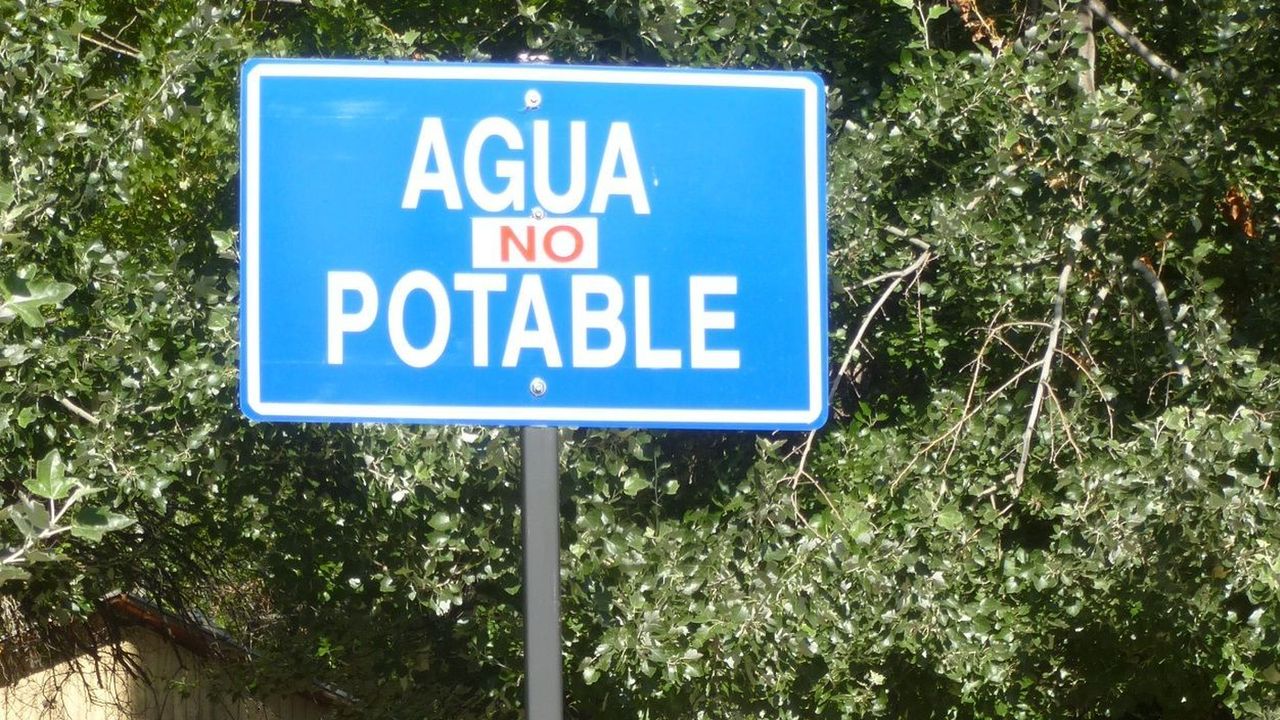Wastewater is considered to be of no use – quite wrongly! Washing water has an average temperature of 30°C. Toilet water might not only be used to produce biogas or fertilizers, but also valuable resources that otherwise would enter the sewer system unused. And even worse: Annually, more than 2 million people die from diarrheal diseases due to the wrong use of wastewater. Experts of the “Water-Energy Group” of Karlsruhe Institute of Technology (KIT) study possibilities to eliminate these problems.
Although about 72% of the Earth’s surface are covered by water, only 0.3% are suited for use as drinking water. “With that in mind, wastewater is no waste. It contains thermal energy, chemical energy in the form of carbon compounds, and valuable plant nutrients. Now, we have to develop processes for the use of these resources,” Helmut Lehn of the Institute for Technology Assessment and Systems Analysis (ITAS) says. Waste heat of domestic wastewater, for instance, might be used with the help of heat exchangers in sewage pipes. “And it is even more effective to use the warm wastewater from the washing machine and the bathroom directly in the house for preheating fresh water for the shower,” Witold Poganietz adds, who heads the research group together with Lehn. Such a system already is in operation in a housing block in Berlin.
A major prerequisite for the intelligent use of wastewater is the separation of wastewater flows from the toilet (black water) and from the bathroom and kitchen (grey water), Lehn continues. If feces were removed separately and undiluted – by using e.g. vacuum toilets as on airplanes or ICEs – three liters of biogas might be produced from one liter of wastewater. “Adding biowaste might even increase the energy yield and the organic waste bin would no longer be required,” Lehn says. And he adds: “Urine is an ideal fertilizer, as it contains nitrogen, potassium, and phosphorus.” As the latter is considered a non-renewable resource that is supposed to run short even before coal and petroleum, studies concentrate on recovering it from municipal wastewater and sewage sludge. This might also help reduce the demand for artificial fertilizers, whose production requires much energy.
According to Franka Steiner, ITAS, the existing infrastructure will continue to require complex cleaning of mixed wastewaters, whereas separation of wastewater flows might be implemented easily in development areas, where new houses are built. This also applies to growing metropolitan areas in threshold and developing countries. “Here, sanitary systems are often lacking completely,” the geoecologist says. All over world, she advises municipal administrations in the planning of wastewater systems. A separation system that produces both energy and nutrients from the wastewater of several thousand inhabitants is being tested by the city of Hamburg in a conversion area. This project is observed by ITAS researchers with high interest.
UN World Water Day Commemorates the Millions of Deaths Due to Wrong Use of Wastewater
To attract attention to the worldwide wastewater problem, the motto “Wastewater” was chosen for this year’s “United Nations World Water Day” on March 22. With good reason: According to the World Health Organization WHO, diarrheal diseases due to the improper use of wastewater cause 4% of all deaths worldwide, with increasing tendency.
Many of the more than 2 million victims per year are children living in developing countries, Lehn says. For comparison: In 2015, about 440,000 people died from malaria (half as many as 15 years before) and 1.1 million people died from AIDS. ITAS researcher Lehn thinks that one reason of the increase in fatal diarrheal diseases is progressing urbanization with more and more people living in densely packed urban slums without hygienic wastewater treatment.
ITAS Informs Citizens about Potential Uses of Wastewater
On Thursday, May 11, 6 to 9 p.m., visitors can inform themselves about potential uses of wastewater at the ITAS building (Karlstraße 11, 76021 Karlsruhe). Experts of the “Water-Energy Group” and practitioners in the wastewater and development aid sectors are invited to give advice. “Citizens will be informed about our current wastewater treatment system, potential alternative uses of wastewater, and the steps that have to be taken by house owners and municipalities,” Helmut Lehn says.
Relationships of Water, Energy, and Waste: ITAS Simulation at the World Water Week
At the World Water Week in Stockholm from August 27 to September 01, 2017, the Water-Energy Group of ITAS will present a simulation. More than 3000 visitors from all over the world are expected to come to the event under the motto of “Water and waste – reduce and reuse.” “Our simulation will highlight technoeconomic, sociocultural and ecological relationships of water, energy, and waste and we plan to design concepts for various urban contexts,” Jasmin Friedrich says, whose studies focus on the water–energy nexus.
KIT Educates Specialists for the Sustainable Use of Water
Another contribution to solving the world’s water problems is KIT’s master’s program “Water, Science & Engineering.” KIT offers interdisciplinary, research-oriented education at the interface of hydrological engineering and natural sciences. The program conveys expert knowledge in water engineering and natural sciences, including water technology and urban water management, hydrological engineering and hydraulics, environmental systems science and water resources management. The program is of international character, many of the courses are in English. Graduates qualify for responsible activities at planning and engineering offices, industrial companies, in the public service sector, international development cooperation, and science.
In close partnership with society, KIT develops solutions for urgent challenges – from climate change, energy transition and sustainable use of natural resources to artificial intelligence, sovereignty and an aging population. As The University in the Helmholtz Association, KIT unites scientific excellence from insight to application-driven research under one roof – and is thus in a unique position to drive this transformation. As a University of Excellence, KIT offers its more than 10,000 employees and 22,800 students outstanding opportunities to shape a sustainable and resilient future. KIT – Science for Impact.

